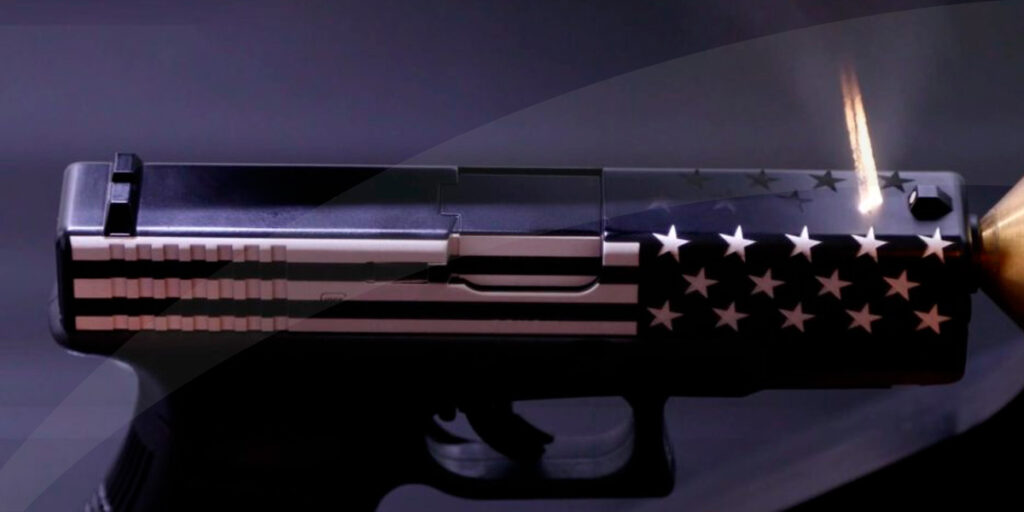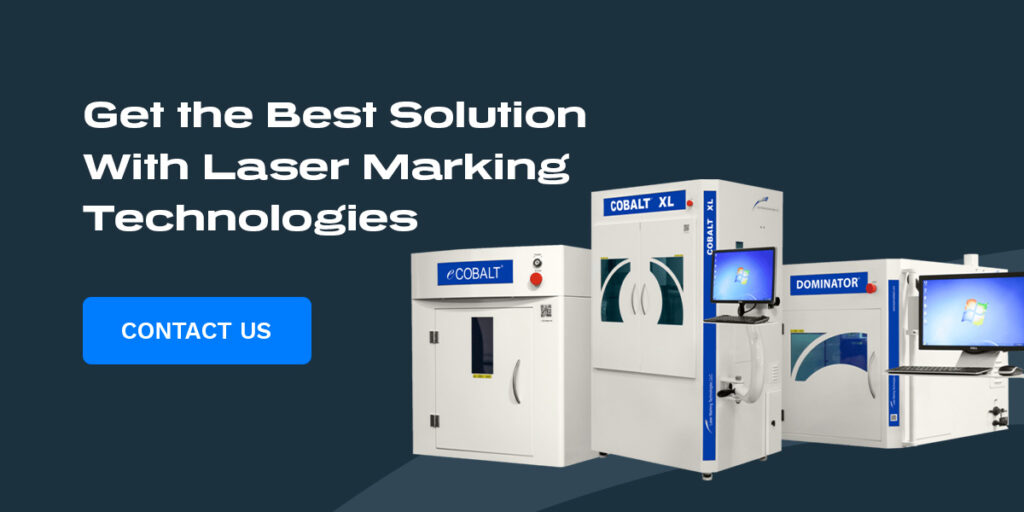How Laser Marking Can Be Used to Create Lasting Impressions

Laser marking is a cutting-edge technology that uses precise laser beams, enabling users to make permanent markings on various materials. This process is essential for industries like automotive, medical and manufacturing. It helps to ensure traceability, compliance and branding. Discover how laser marking creates lasting impressions and its advantages over traditional methods and applications across different sectors.
How Laser Marking Creates Lasting Impressions
Laser marking technology offers precision and durability, making it ideal for creating permanent marks on various materials. This process ensures high-quality, legible and long-lasting impressions, essential for traceability, branding and compliance across manufacturing, automotive, medical and many more industries. Discover how laser marking can elevate your products and processes.
Creating Lasting Impressions With Laser Marking Systems
Laser marking technology uses focused laser beams to create lasting laser impressions, which typically remain permanent on various materials, depending on the type of laser used, the material used and environmental factors. There are several different types of lasers that you can select from, each with different ideal applications. These include:
- Fiber lasers: Fiber lasers are ideal for marking metals and plastics, and are known for their high precision and speed.
- Carbon dioxide (CO2) lasers: Suitable for non-metal materials like wood, glass and ceramics, CO2 lasers provide high-quality marks.
- Ultraviolet (UV) lasers: Perfect for marking sensitive materials such as medical devices and electronics, UV lasers ensure minimal thermal impact.
- Green lasers: These lasers are excellent for marking reflective materials like copper and gold and certain plastics.
Durability of Marks
Laser marking is renowned for producing durable and long-lasting marks, making it a preferred choice across various industries. The longevity of these marks is influenced by several factors, which are essential to know to ensure the marks remain legible and intact over time. Factors that influence marking longevity include the following:
- Material type: Different materials react uniquely to laser marking. Metals like stainless steel and titanium typically retain marks the longest due to their hardness and resistance to environmental factors.
- Laser type and setting: The choice of laser and its settings, including power, speed and frequency, affect it. These significantly impact the depth and quality of the mark, affecting its durability.
- Environmental conditions: Exposure to harsh environments, such as extreme temperatures, chemicals and UV radiation, can affect the longevity of laser marks.
- Surface treatment: Pre-treatment of the material surface, such as cleaning or coating, can enhance the adhesion and durability of the laser mark.
- Application method: The method used to apply the laser, including the angle and distance of the laser, can influence the mark’s resilience.
Surface Properties and Laser Marking
The material’s surface properties significantly influence the quality of laser marking. The following factors can affect the clarity, contrast and precision of the marks:
- Surface roughness: Smooth surfaces generally yield clearer and more precise marks, while rough surfaces can scatter the laser beam, leading to less defined markings.
- Reflectivity: Highly reflective surfaces, like polished metals, can reflect the laser beam, reducing marking efficiency and quality.
- Cleanliness: Contaminants such as oils or dust can interfere with the laser’s ability to mark the surface properly.
That said, there are techniques for optimizing laser marking on different materials. By considering the following, you can ensure a more pristine marking:
- Surface preparation: Cleaning the surface to remove contaminants ensures better laser interaction and mark quality.
- Adjusting laser parameters: Modify the laser setting to suit the material’s properties, which can enhance the final marking.
- Using appropriate lasers: Selecting the right laser type based on the material’s characteristics ensures optimal results.
- Surface treatment: Applying surface treatment like anodizing or coating can improve mark contrast and durability.
How Laser Marking Compares to Other Processes
Laser marking stands out for its precision, durability and versatility, surpassing traditional marking methods such as inkjet printing, stamping, labeling and engraving. These conventional techniques often fall short regarding mark longevity, environmental impact and adaptability to different materials. This makes laser marking the superior choice for modern applications.
Advantages Over Traditional Marking Methods
Laser marking offers numerous advantages over traditional marking methods, making it a preferred choice for many industries. The following are the key benefits of selecting it over conventional methods:

- Speed: Laser marking is a fast process that produces high-quality marks in a fraction of the time required by engraving or stamping. This efficiency boosts productivity and reduces operational downtime.
- Precision: Lasers can create highly detailed and intricate designs with exceptional accuracy. The high precision of laser marking is crucial for applications requiring fine detailing, such as serial numbers, barcodes and logos.
- Long-term cost-effectiveness: While the initial investment in laser marking equipment may be higher, the long-term costs are lower. This is due to minimal maintenance, no excessive consumables like ink or stencils and reduced labor costs.
- Environmental sustainability: Laser marking is an eco-friendly process that does not use inks, chemicals or solvents, reducing waste and environmental impact. It can also often consume less energy compared to some traditional methods.
- Adaptability: Laser marking systems can easily be adjusted to mark several different materials, from metal to glass. This versatility makes laser marking applicable to various industries and applications.
- Lower maintenance: Laser marking systems require minimal maintenance compared to traditional methods, which often involve regular replacement of consumables and parts.
- Permanence of markings: Laser marks are highly durable and resistant to wear, ensuring they retain legibility. This permanence is essential for traceability and compliance in industries like automotive and medical.
- Non-contact: The laser marking process is contactless, leading to no physical wear on the marking equipment, material or product. Non-contact means reduced risk of damage and extends the life span of the equipment and the marked items.
- Flexibility: Laser marking systems can be integrated into automated production lines. This enhances efficiency and consistency in high-volume manufacturing environments.
Using Laser Marking for Industrial Applications
Laser marking is crucial across various industries due to its precision, durability and compliance with regulatory standards. The following are the industries that can highly benefit from laser marking:
- Automotive: In the automotive industry, laser marking ensures the traceability and authenticity of parts, which is vital for safety and quality control. There are often regulations that require permanent markings on components to help handle theft, recalls or track component defects. The benefit of laser marking is its high-contrast and durable nature that can withstand harsh environments.
- Cutting tools: For cutting tools, laser marking offers precise and permanent identification of part numbers, dimensions and manufacturing dates. This assists with traceability during the manufacturing processes and is crucial for helping to maintain quality control. Also, laser marking is non-contact, which helps preserve the tools’ integrity and ensures they are reliable and functional.
- Electric vehicle: The electric vehicle (EV) industry relies on laser marking for the traceability of components like batteries, inverters and electronic control units (ECUs). The marks assist with tracking parts during their life cycle, which aids in compliance with strict certification marking regulations. Laser markings can also help with creating aesthetic branding for EV components.
- Firearms: In the firearms industry, laser marking is used for serialization and compliance with federal regulations set by the Bureau of Alcohol, Tobacco, Firearms and Explosives (ATF). The regulations require that serial numbers are a specific size and depth to ensure the firearms are traceable and prevent tampering. To meet these legal requirements, manufacturers can use the precision laser markings offer.
- Manufacturing: Manufacturing industries use laser marking for product identification, branding and regulatory compliance. This process offers high-quality and permanent marks, which are crucial for item tracking and helping to ensure against counterfeiting. Laser marking also assists with speeding up this aspect of manufacturing and helps decrease waste.
- Medical: In the medical industry, laser marking is critical for marking surgical instruments and medical devices used daily. The United States Food and Drug Administration (FDA) set up the Unique Device Identification (UDI) system and mandates that the markings comply with such regulations. Using laser marking, the marks are resistant to repeated sterilization, biocompatible and maintain their durability.

Get the Best Solution With Laser Marking Technologies
Laser Marking Technologies is a leader in providing advanced laser marking solutions tailored to various industries and has assisted clients for over 20 years. With cutting-edge technology, extensive expertise and exceptional customer support, we ensure optimal performance and compliance with industry standards.
Choose us for reliable, precise and durable marking solutions. Contact us today to discuss the different types of lasers, find the perfect laser marking machine for your needs and elevate your production processes.

